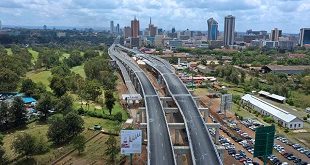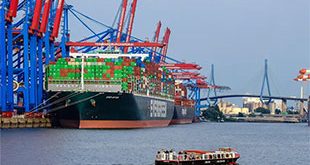
By Ronald Musoke
2014 O’Level results show how performance in Sciences is not about to improve
It was the usual routine when, on Feb.3, the Uganda National Examination Board (UNEB) released results of the 2014 O’Level national examinations.
Results of 1,936 students from 31 examination centres in 20 districts around the country were withheld and are awaiting investigations.
Problems arose mainly over science subjects. Challenges persist in physics, mathematics and biology which were among the worst done subjects.

Mathew Bukenya, the UNEB executive secretary explained that the prevalence of malpractice in sciences and mathematics last year points to very poor teaching in these subjects. As teachers panic at the last moment, they resort to malpractice to cover up for the inadequate teaching and the lack of practical training.
In some of these cases, the teachers involved connived with invigilators and carried out the experiments meant to have been done by the candidates themselves and supplied the answers to candidates.
In the science theory and mathematics papers, the assistance was provided through worked solutions which candidates then copied.
“There is evidence of lack of practical teaching despite the tremendous efforts made by the Ministry of Education and Sports in supplying laboratory equipment to schools,” Bukenya said.
UNEB examiners in reports say candidates still find problems in handling of laboratory apparatus, making and recording observations, and drawing conclusions from those observations during the practical tests.
The students also find difficulties with questions requiring explanations, description of experimental procedure, use of chemical symbols and formulae, writing of units and dealing with tasks that require practical experience.
In mathematics, students are poor at construction of graphs, solving of simultaneous equations, skills of geometrical construction, vectors, the set theory, fraction expressions, and computation of compound interests, among others.
As Jessica Alupo, the Minister of Education and Sports noted, two of those poorly done subjects; mathematics and physics, are essential for the technological advancement of Uganda.
Alupo said the government is determined to improve the performance in science.
She said the Education Service Commission is addressing the challenge of inadequate number of science teachers as there are many science teachers in circulation but they are not yet on the government payroll.
“The government now pays an additional 30% for science teachers and if they are serving in hard to reach areas, the government pays them another 30%,” she said, “On the part of the government, in terms of motivating teachers; we have done 99.9%.”
“These interventions should be enough to improve actual teaching. What remains is to sensitise the communities and teachers on what has been done so that gaps can be identified.”
But Huzaifa Mutazindwa, the director of education standards at the education ministry says focus should be on private schools. He said many of these schools flout basic requirements and minimum standards and are to blame for the poor performance.
10 years of running in circles
But, almost 10 years since the government came up with the bold move to make sciences compulsory, why do students continue to perform poorly in science subjects? What are students, teachers, parents and most importantly the education ministry not doing right? And what needs to drastically change in the coming years to turn around the situation?
A 2009 Parliamentary Committee on Social Services noted that despite government making science subjects compulsory at O’ level, most schools in the country did not have adequate laboratories.
The committee further reported that out of all the 911 government schools, only 455 (50%) had functional science laboratories. This implies that students in 50% of government schools do sciences without access to laboratory facilities.
According to the Education and Sports Sector Annual Performance Report for financial year 2009/10, most of the schools were not teaching or conducting science practicals.
The inspection was based on a minimum of eight periods in a week for all the science-based subjects in Senior Three and Four.
The findings indicated that 79% of the schools do not conduct practical lessons in sciences; in Moroto for example, 80% of the schools do not conduct practicals, in Manafwa it was 63%-90% and 42% in Butaleja.
For those schools that have laboratories, there were no reagents and even where they exist, the teachers do not have sufficient time to prepare the practicals.
It gets worse in private schools as they cannot afford the cost of science infrastructure and therefore opt to conduct practicals infrequently, especially towards national examinations.
Another report noted that science performance by students in rural areas is worse than in urban schools.
According to the report, in 2008, the districts of Amolatar, Pader, Kaabong, Abim and Nakapiripirit had no science students sitting national A’Level examinations. Not much has changed as these districts are frequently named for posting the highest failure rates every year.
The districts of Namayingo, Bugiri, Bududa, Buyende, Bulambuli, Busia, Butaleja and Manafwa, all from eastern Uganda and Bundibugyo in western Uganda recorded the highest failure rates in the 2014 O’Level results.
A science teacher with over a decade of experience in one of the oldest city secondary schools told The Independent that most schools in Uganda do not have the right environment for teaching and learning science; especially in the lower classes.
“Science is highly technical and most of the knowledge is built progressively from Senior 1-4. In fact what students learn in these lower secondary classes forms the basis for understanding the syllabus in the upper classes,” George Ayuma, a science teacher at Kololo SSS told The Independent on Feb.6.
Ayuma says focus must be put at the basic level of teaching if students are to enjoy learning science. “It is not enough to establish the odd laboratory; there should be many laboratories sufficient enough to match the student population,” he says.
He says classes must also be manageable with about 40 students and not the average class of between 60—80 students today. In this situation, the teacher is forced to continue with fast-learning students who are normally the minority.
“Practicals in most schools are given to students in Senior Three and Four and in the process science knowledge gets rushed up,” he said.
By this stage, Ayuma says, very little can be salvaged because the students already have attitude issues; they are already dealing with a lot of material in which case they end up prioritising.
Modest interventions
In 2006, the government introduced a policy that made the core science subjects; physics, chemistry, biology and mathematics, compulsory for all lower secondary level students.
This was in line with the government’s bold step to enhance science education as a strategic investment to create a critical mass of scientists and engineers to spur growth and development in the country. A similar policy was adopted at the tertiary level where half of the students on government scholarships must study science and technology.
It meant rectification of longstanding attitudes that promoted and valued arts and social sciences. This led to the shunning of sciences right from primary level.
The policy is meant to fast-track Uganda’s mission of achieving middle income status spelt out in its development blueprint, Vision 2040.
According to the government vision, Uganda should have a transformed society from a peasant to a modern and prosperous one within the next 25 years.
The fundamentals that must be got right include putting up the necessary infrastructure, promoting science, technology, innovation, engineering and upgrading the human resource, especially the youthful population.
But it seems upgrading Uganda’s human resource via science education might take a little longer.
A 2012 study conducted by the Uganda National Council of Science and Technology’s (UNCST) human capital development unit titled, “The Quality of Science Education in Uganda,” noted that students fail because of the poor science infrastructure in schools and the teaching and learning methods that are largely theoretical. Many teachers are poorly prepared and the equipment and laboratories are very expensive.
Another experienced science teacher who teaches at a Kampala-based school recently told The Independent that an average school requires between Shs 3 million— Shs 4 million for buying utilities in the laboratories per term but, since most schools cannot afford this money; they are forced to deal with essentials. In this case, they concentrate on Senior Four students who are getting ready to sit UNEB examinations.
“The quality of science education is to a large extent affected by the curriculum design (but) the curriculum is exam-based, it is devoid of activity-based learning, and does not stimulate interest and innovation and as a result students perceive school science as lacking relevance,” the report reads in part.
The problem is reinforced by the method of assessment, which only rewards students who are highly inclined to rehearse what they have crammed as opposed to being innovative.
The report further says teachers are restricted by the curriculum because emphasis is placed on its completion and not how well students can apply and explain what they have learnt.
Some teachers, the report notes, are not innovative and creative and therefore make science learning boring. They do not make use of the environment and locally available materials to teach; some of them are not able to relate science to everyday life, making the learning exercise detached and irrelevant.
Improving quality of teachers
To improve things, the UNCST report noted, the teaching profession generally needs to be accorded the important status it deserves.
“The profession must reclaim the prestige and allure that it had in the post-colonial era,” the report notes.
Enrolments in teacher training institutions (NTCs and TTCs) and education programmes are on the decline, at the moment, and many of the students who enrol in these institutions do so due to a lack of alternatives.
Even then, some teachers leave the profession after training, while most of those who remain are not interested in teaching.
This is because teachers are among the worst paid civil servants and many schools do not offer housing and other essential facilities.
On a positive note, Bukenya talked about the ever increasing number of candidates. Last year, there was a 5% increase of candidates. In absolute numbers, 14,646 more students registered for the examinations bringing the number to 310,414 candidates compared to 295,768 the previous year.
Bukenya said about half of the candidates in 2014 were beneficiaries of the Universal Secondary Education (USE).
He also noted that 146,366 or 47.8% of the total number of candidates who sat last year’s exams were female implying that the gap in enrolment between the two genders is closing and the completion rates for the female candidates are improving.The rate of absenteeism was also the lowest in the last five years.
It also appears the general performance of candidates improved in comparison to that of 2013 with only 6.6% of the 306,165 who sat the examinations failing completely.
An excited Alupo said this means that the transition rate from the PLE level to the basic secondary level has improved.
UNEB’s executive secretary attributed the overall candidates’ improved performance this year to teachers who put in more effort to address the areas of weaknesses pointed out in the previous examiners’ reports. Hopefully, it will happen for the science subjects too.
 The Independent Uganda: You get the Truth we Pay the Price
The Independent Uganda: You get the Truth we Pay the Price





